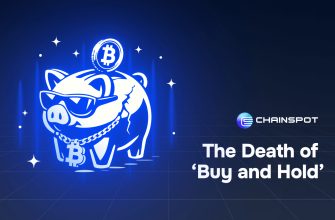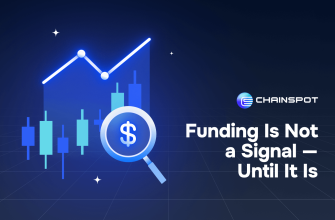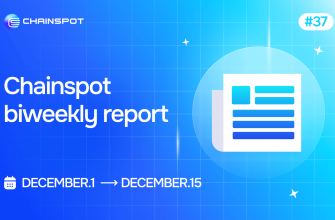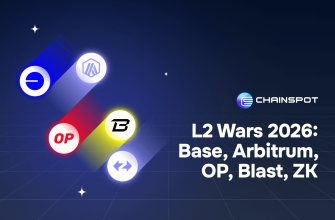- TL;DR (for the impatient)
- 1) Why retrodrops exist and why the meta keeps mutating
- 2) The scoring models you’ll face in 2026 (and how to win them)
- 3) “What to farm now”: a bucketed watchlist (with to-do lists)
- Bucket A — Fresh L2/L3 stacks (zk, fraud proofs, app-rollups, intent layers)
- Bucket B — Restaking & AVS ecosystems
- Bucket C — On-chain perps & order-book L1s
- Bucket D — Bridges & routers
- Bucket E — AI agent networks
- Bucket F — DePIN & compute markets (GPU, storage, bandwidth)
- Bucket G — Stablecoin-centric L2s (payments rails)
- 4) The quality checklist (copy this into your notes)
- 5) How to find the next retrodrop (three funnels)
- 6) Avoid the traps (so you keep your budget)
- 7) Tooling that makes you faster (and safer)
- 8) Playbooks by user type
- A) Retail farmer (limited time, limited budget)
- B) Power user (lots of chains, decent bankroll)
- C) Small team / DAO treasurer
- 9) How allocations are likely decided in 2026 (a model you can score yourself on)
- 10) Risk management (because farming with no bankroll = no farming)
- 11) A sample monthly cadence (you can literally calendar this)
- 12) FAQs
- 13) Final checklist (print this)
- Closing
Long read, practical, no fluff. Save it and use it as a playbook.
Heads-up before we start: most retrodrop strategies live or die on execution costs. When you need gas or stablecoins on a new chain fast, don’t chain three swaps + a bridge and donate your edge to fees. Route swap + bridge in one click with Chainspot, pick the cheapest path, and stack cashback + referrals while you farm: https://app.chainspot.io
TL;DR (for the impatient)
-
Retrodrops aren’t dying; they’re professionalizing. Expect multi-season points, tiered allocations based on quality of usage (not raw TX count), heavier sybil resistance, and KYC-lite in some jurisdictions.
-
2026 meta = do real things. Protocols will score depth, persistence, diversity, and risk taken: holding balances, routing real volume, being the LP of last resort, using advanced features (perps/intent routers), contributing to governance/docs, and showing identity continuity across wallets.
-
Where to farm now (buckets):
-
New L2/L3 stacks (zk + fraud-proof rollups; app-rollups; intent-centric layers)
-
Restaking + AVS ecosystems (operators, shared security middlewares, data availability)
-
On-chain perps + order-book L1s (trade volume + maker activity; referral ecosystems)
-
Bridges & routers (cross-chain mobility remains king)
-
AI agent networks (task marketplaces; agent-to-agent payments)
-
DePIN & compute markets (GPU/storage bandwidth; useful work)
-
Stablecoin-centric L2s (payments rails; merchant flows)
-
-
How to farm without getting farmed: use one main identity (plus a few backups), pre-fund gas on two chains, rotate via a cheap one-click route (hello, Chainspot), log everything, and copy the quality playbook, not just “TX spam.”
1) Why retrodrops exist and why the meta keeps mutating
Protocols use airdrops to bootstrap users, liquidity, and distribution. But each cycle gets gamed. In 2021 it was “10k TXs.” In 2023–24 it was “complete quests.” In 2025 we shifted toward points seasons, sybil detection, and identity-weighted scoring. By 2026, expect a simple rule: they’ll pay for what they want to keep.
That means larger allocations for wallets that:
-
Show persistent balances (not zero-on-Monday, farm-on-Tuesday).
-
Route meaningful volume through the core thing the protocol offers (perps, intents, payments, compute, etc.).
-
Hold risky or sticky roles (LPing volatile pools, operating a node/operator, posting collateral).
-
Provide evidence of “real human or real org” without doxxing (social proofs, old ENS/Farcaster handles, cross-app graph).
-
Contribute: pull requests, docs, governance posts, bug reports.
Translation: the meta is trending away from click-mining and toward relationship-mining. If you bring real activity and capital, the 2026 distributions are built for you.
2) The scoring models you’ll face in 2026 (and how to win them)
Protocols won’t publish their formulas, but they rhyme. Here’s the playbook:
-
Depth — average balance, not peak. Keep native gas + stable buffer parked, not dust.
-
Persistence — weekly or monthly “heartbeat.” Aim for at least one meaningful interaction per epoch (LP update, trade, bridge, vote, agent task).
-
Diversity of actions — breadth matters: swap + LP + vote + use the SDK once.
-
Friction — they reward what cost you something (LP impermanent loss risk, operator uptime, staking lockups).
-
Identity continuity — the same persona across months; bonus if tied to public handles or on-chain identity (ENS, Farcaster, Lens).
-
Builder points — doc PRs, subgraph contributions, testnet bugs. A single merged PR can outweigh hundreds of trivial TXs.
Sybil resistance will be tougher. Patterns to avoid: identical rotation times, equal TX sizes, copy-paste routes, fresh wallets with zero social links, and synchronized “quests.” Stagger your activity, vary sizes/venues, and be a person, not a machine.
3) “What to farm now”: a bucketed watchlist (with to-do lists)
Note: Projects and timelines shift. Treat this as a framework + examples you can research. Don’t spend meaningful gas before you verify current criteria on official sites/channels.
Bucket A — Fresh L2/L3 stacks (zk, fraud proofs, app-rollups, intent layers)
Why this bucket pays: New execution layers need users, gas buyers, and app liquidity. They tend to run multi-season points and early-user multipliers.
What to do (in general):
-
Bridge early (keep a buffer of native gas + stables).
-
Use the native router/bridge once, then use aggregators for real rotations.
-
Trade a bit, LP a bit, vote if governance exists, and touch the SDK (even a single script).
-
Keep one wallet as your face (old ENS, stable history).
Execution tip: bridge/swap via Chainspot to compress bps and earn cashback: https://app.chainspot.io.
Examples to research:
-
New ZK rollups announcing upgrades/points seasons (monitor official blogs; zk stacks love public seasons).
-
App-rollups for perps, payments, or gaming that run “Season 0/1”.
-
Intent-centric layers/routers where the solver network is the real product — try submitting intents, and, if you’re technical, run a tiny solver.
Bucket B — Restaking & AVS ecosystems
Why it pays: 2025 popularized restaking. In 2026, the AVS layer (oracles, data availability, sequencing, co-processors) looks like a farm-of-farms: each service may retrodrop to users and operators.
What to do:
-
Stake/restake via respected liquid restakers; avoid unaudited wrappers.
-
Delegate to active operators (they sometimes share points).
-
Use AVS-powered apps (the end-user layer often counts).
-
Operate if you’re technical: light validators, relayers, or watchers often accumulate double points.
Risk reality: restaking stacks can cascade risks. Size sanely; use safu operators; keep a journal of exposures.
Bucket C — On-chain perps & order-book L1s
Why it pays: On-chain OB venues compete with CEX spinouts; they reward makers, referrers, and consistent traders.
What to do:
-
Trade with a plan (funding windows, reduce-only brackets, limit orders).
-
Be a maker whenever possible (rebates + better scoring).
-
Bring friends with referrals (this is usually in the formula).
-
LP small on high-liquidity books to learn fee schedules.
Pro move: keep collateral nimble across chains. Route post-session via Chainspot to claw back bps in cashback.
Bucket D — Bridges & routers
Why it pays: Cross-chain mobility is the lifeblood of every season. Routers need real routing volume and liquidity nodes; some still run points.
What to do:
-
Use routers for actual rotations, not dust.
-
Become a liquidity node/market maker if you can (higher weight).
-
Refer friends; routers love referral graphs.
-
Keep receipts—routing history is your resume.
Chainspot itself is a cross-chain router: swap + bridge in a single flow, lowest-cost route selection, and loyalty cashback with referral share. If you farm a lot, those bps matter: https://app.chainspot.io
Bucket E — AI agent networks
Why it pays: Agents need tasks, payments, reputation, and devs. Early task-doers and tool builders are prime retrodrop candidates.
What to do:
-
Run a simple agent (template repo) and complete tasks.
-
Pay/receive via the network’s native rails; keep the agent online.
-
Publish a tool/plugin; write docs or a guide (builder points!).
-
If there’s an agent marketplace, list a helpful, reliable agent.
Bucket F — DePIN & compute markets (GPU, storage, bandwidth)
Why it pays: Networks pay to bootstrap supply and demand. Providers who show uptime and throughput often get outsized allocations.
What to do:
-
Provide compute or bandwidth with a modest rig.
-
Prove consistent uptime; complete payouts on-chain.
-
If you’re demand side (ML training, rendering), pay on-chain.
-
Keep a human identity tie (Farcaster, GitHub) if the rules allow—it helps with sybil checks.
Bucket G — Stablecoin-centric L2s (payments rails)
Why it pays: Payments layers care about merchant flows and consumer habit. Early payers and integrators can get rewarded.
What to do:
-
Use stablecoins for real purchases when possible.
-
Test merchant tools if you run a store (even a test store).
-
Try mass payouts features; payroll/testing counts.
-
Bridge USDC/USDT in meaningful chunks, not dust.
4) The quality checklist (copy this into your notes)
-
Balances: keep non-zero stables + native gas on target chains.
-
Cadence: touch each farm weekly (or whatever the epoch is).
-
Breadth: swap + LP + vote + refer + try a dev SDK call.
-
Stickiness: leave LP or collateral alive over a weekend.
-
Identity: one main wallet with consistent history + social proofs.
-
Costs: simulate routes, aggregate swap+bridge, and track bps saved (those bps = more farm for the same budget).
-
Journal: dates, tx hashes, roles, and what changed—so you can prove activity later.
5) How to find the next retrodrop (three funnels)
-
Code & queues funnel
-
Watch GitHub release tags (SDKs, “points,” “season”).
-
Track multisig/timelock queues (fee switch, emissions start).
-
Map new deployers and bridges lighting up.
-
-
Ecosystem funnel
-
L2 foundations announce grants, quests, dev programs.
-
Bridge/Router campaigns with partner weeks (double points).
-
Perps L1s launching maker programs (rebates + points).
-
-
Social/identity funnel
-
Farcaster channels for ecosystems (frames with missions).
-
Official Discord “missions” with on-chain proofs (avoid off-chain-only screenshot tasks).
-
Early referral trees (document who you onboarded).
-
Rule: back-test rumors. If a “leak” says “TX count matters,” but the team publicly stresses quality, believe the public guidance.
6) Avoid the traps (so you keep your budget)
-
Sybil herding: 20 wallets doing identical actions by the minute = auto-filter. If you must split, stagger weeks, vary sizes, and attach human continuity to your main.
-
TX spam: protocols detect no-op actions. Use meaningful sizes.
-
Quest farms with off-chain proofs only: low signal; often botted; little future value.
-
Bridging at peak gas: pre-fund gas on target chains. If you forgot, at least aggregate the route to minimize damage.
-
Fake sites & tokens: always verify domains and contracts on official channels.
7) Tooling that makes you faster (and safer)
-
Explorers (Etherscan/-scans, Solscan) → ground truth for your receipts.
-
Dune → check if your farm shows up in decoded events; track cohorts.
-
Nansen / Arkham → label who’s actually using the new chain (are funds arriving?).
-
Tenderly → simulate risky tx; check what will actually fire.
-
Passwordless & passkeys (for AA wallets) → smoother daily use without seed panic.
-
Chainspot → collapse swap + bridge into one cheap flow; cashback quietly boosts IRR on your farm. https://app.chainspot.io
8) Playbooks by user type
A) Retail farmer (limited time, limited budget)
-
Pick 3 buckets, not 30.
-
Keep $100–$300 stable buffer + native gas on each target chain.
-
One weekly session: do one meaningful action per bucket (LP top-up, trade, vote, bridge).
-
Route via Chainspot; chase cashback to offset spend.
-
Journal in a simple spreadsheet: date, action, tx link.
B) Power user (lots of chains, decent bankroll)
-
Maintain one main persona + 1–2 backups.
-
Run maker on an on-chain OB with tight risk rules (reduce-only, funding awareness).
-
Stake/restake to a curated set of operators; use AVS-powered apps weekly.
-
Provide or consume compute on one DePIN network.
-
Teach once a month: a short guide or PR; builder points compound.
C) Small team / DAO treasurer
-
Use Safe for the vault (2-of-3 or 3-of-5) + a hot operational wallet.
-
Allocate a farm budget with a cap per bucket; rotate profits back to the Safe.
-
Keep gas buffers on chains you touch; nothing worse than a stuck multisig.
-
Log all routes and refunds; Chainspot receipts simplify accounting (and the cashback matters at size).
9) How allocations are likely decided in 2026 (a model you can score yourself on)
Scoring sketch (example only):
-
Usage (40%)
-
Volume routed (weighted by pair/feature) — 20
-
Active weeks in season — 10
-
Diverse actions — 10
-
-
Capital (25%)
-
Average balance (native + stable) — 10
-
Sticky risk (LP, collateral, operator uptime) — 15
-
-
Identity (20%)
-
Age of wallet / cross-app links — 10
-
Sybil heuristics (uniqueness of patterns) — negative or positive band
-
-
Contribution (15%)
-
Governance participation / proposals — 5
-
Docs/PRs/tooling — 10
-
Your move: self-score quarterly and adjust. If your own tally is weak on contribution and stickiness, fix that first. It’s where most farmers leave free points.
10) Risk management (because farming with no bankroll = no farming)
-
Per-bucket cap: never allocate more than X% of farm capital to one bucket.
-
Chain diversification: don’t rely on a single new L2 for all your balances.
-
Operational security: hardware signer for vault; hot wallet for daily.
-
Funding windows: avoid opening new perps minutes before funding flips.
-
Emergency plan: know how to exit quickly (and cheaply) if a chain halts—pre-fund a second chain’s gas so you can reroute via Chainspot under pressure.
11) A sample monthly cadence (you can literally calendar this)
Week 1 — L2/L3 focus
-
Bridge a top-up to the new chain (Chainspot).
-
Trade one pair; add/adjust one LP; try one native dApp you haven’t touched.
Week 2 — Restaking & AVS
-
Claim + restake; rotate operator delegation if needed.
-
Use one AVS-powered app; log it.
Week 3 — Perps OB + Router
-
One maker session (tight sizes); split across 2–3 hours away from funding flips.
-
Route a real cross-chain move via a router; keep receipts.
Week 4 — Agents / DePIN / Payments
-
Run one agent task; or provide 24–48h of compute.
-
Do one real payment on a stablecoin L2 (even $10).
-
Write a mini-guide or PR; link it to your identity.
Repeat next month. This pattern keeps your heartbeat visible all season.
12) FAQs
Is “multi-wallet sybil” still viable?
It’s getting worse every month. You’ll do better with one strong identity plus 1–2 thoughtful backups than with 50 clones.
Do “quests” still matter?
Only if they’re on-chain and tied to the product’s core usage. Off-chain CAPTCHA spam is mostly noise now.
How big should my transactions be?
Enough to register as non-spam (varies by app), small enough that you’re fine if it underperforms. Focus on weekly cadence over size.
Will KYC kill retrodrops?
Some regulated apps may require KYC-lite for part of the allocation. Many infra and base-layer programs will keep permissionless tiers. Diversify.
13) Final checklist (print this)
-
Pick 3–5 buckets you actually understand.
-
Anchor on one main identity with continuity.
-
Pre-fund gas & stables on two chains at all times.
-
Every week: do one meaningful action per bucket.
-
Log tx hashes and dates; save receipts.
-
Route rotations via Chainspot (swap+bridge in one click, cashback + referrals) → https://app.chainspot.io
-
Once a month: contribute (docs, PRs, tutorials).
-
Risk: per-bucket caps; avoid peak gas; avoid funding flips.
-
Security: hardware for vault; revoke old approvals monthly.
Closing
2026 won’t kill retrodrops; it will make them grown-up. Teams are done paying for empty clicks. They’ll reward usage that sticks, capital that matters, actions that show you’re human, and contributions they can count.
If you align with that, you won’t need 100 wallets or midnight click-marathons. You’ll need good habits, clean execution, and cheap routes so you keep the edge you earn. Keep a small gas buffer everywhere you farm, act weekly, and write down what you did. When the snapshot comes, you’ll be obvious to score—because you were the kind of user they wanted in the first place.
Move capital the smart way while you farm: https://app.chainspot.io
One click. Cheapest route. Cashback every time. Plus referrals for the friends you onboard.












